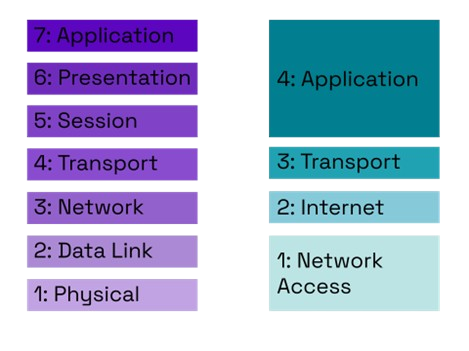Course 10 - OSI & TCP/IP Models
The OSI and TCP/IP Models
The OSI and TCP/IP models are core
networking models that represent systems’ communication. These two
models are highly similar. In fact, they are practically the same
except for the fact that layers 5, 6, and 7 of the OSI model are
equivalent to layer 4 on the TCP/IP model, and layers 1 and 2 on the
OSI model are equivalent to layer 1 on the TCP/IP model. In this
article, we will use the OSI model to explain. It is important for
cybersecurity professionals to understand these models to understand
the different risks and defenses that come with different layers.

The OSI Model:
-
Layer 1: Physical: data as
electrical signals in wires
-
Layer 2: Data Link: data begins to
be formatted into packets, communication between devices begins
(switches are in this layer)
-
Layer 3: Network: routing to
different destinations begins, communication outside the LAN
(routers are in this layer and are absolutely crucial here)
-
Layer 4: Transport: regulates
communication in regards to protocols and ports, as well as checking
for packet formatting errors
-
Layer 5: Session: sessions (active
connections between devices) are started/stopped to allow data in
and out
-
Layer 6: Presentation: also known as
the syntax layer, data is uniformly formatted in preparation for use
by the end/destination node
-
Layer 7: Application: final
presentation of data in user applications


